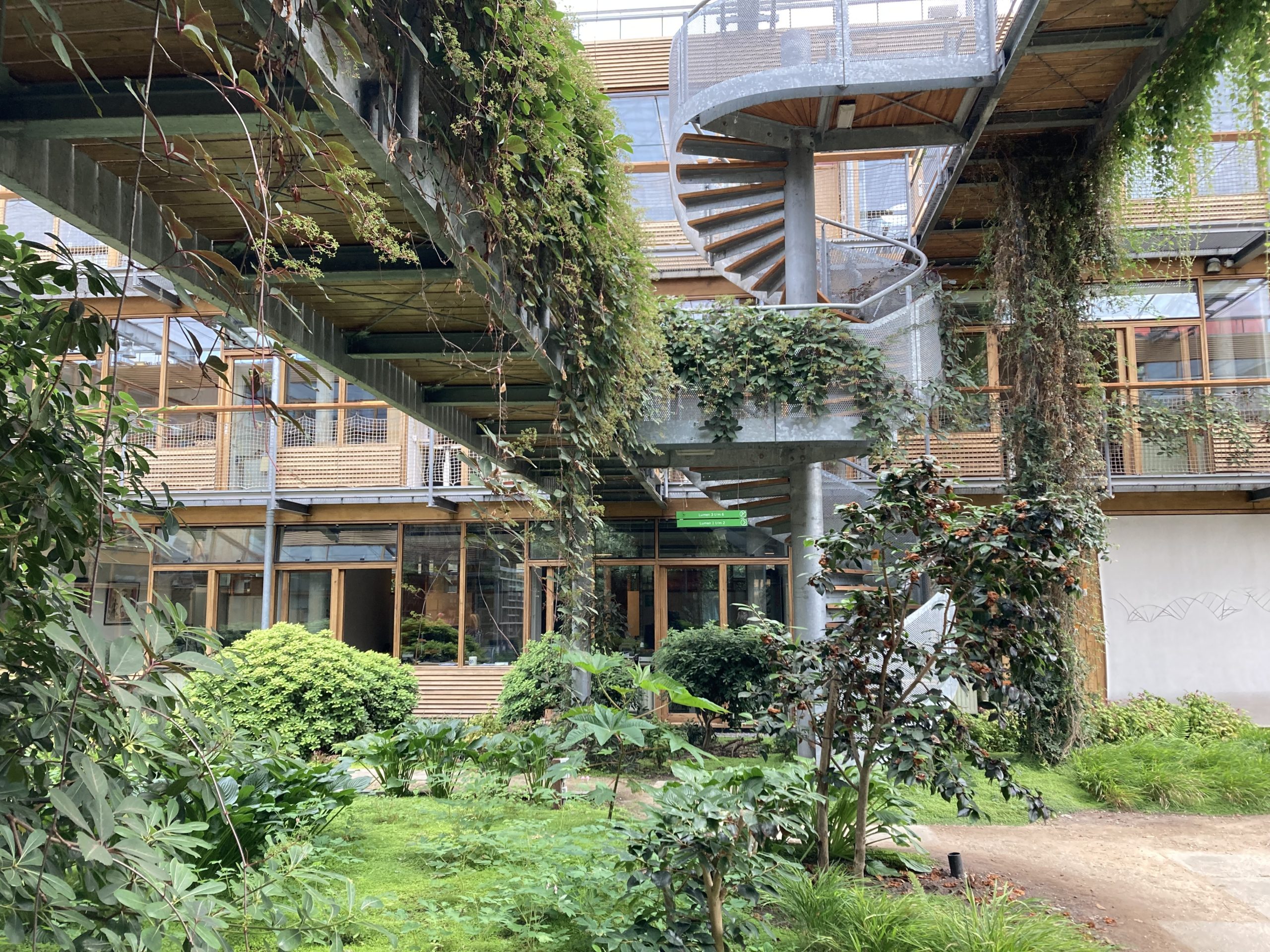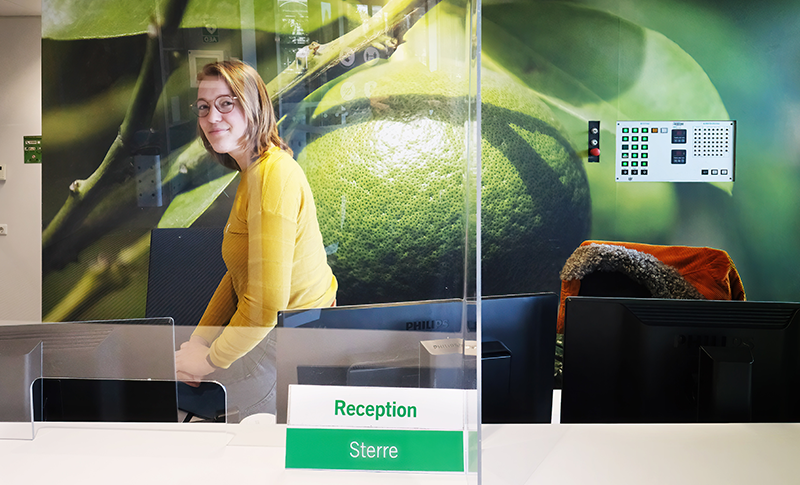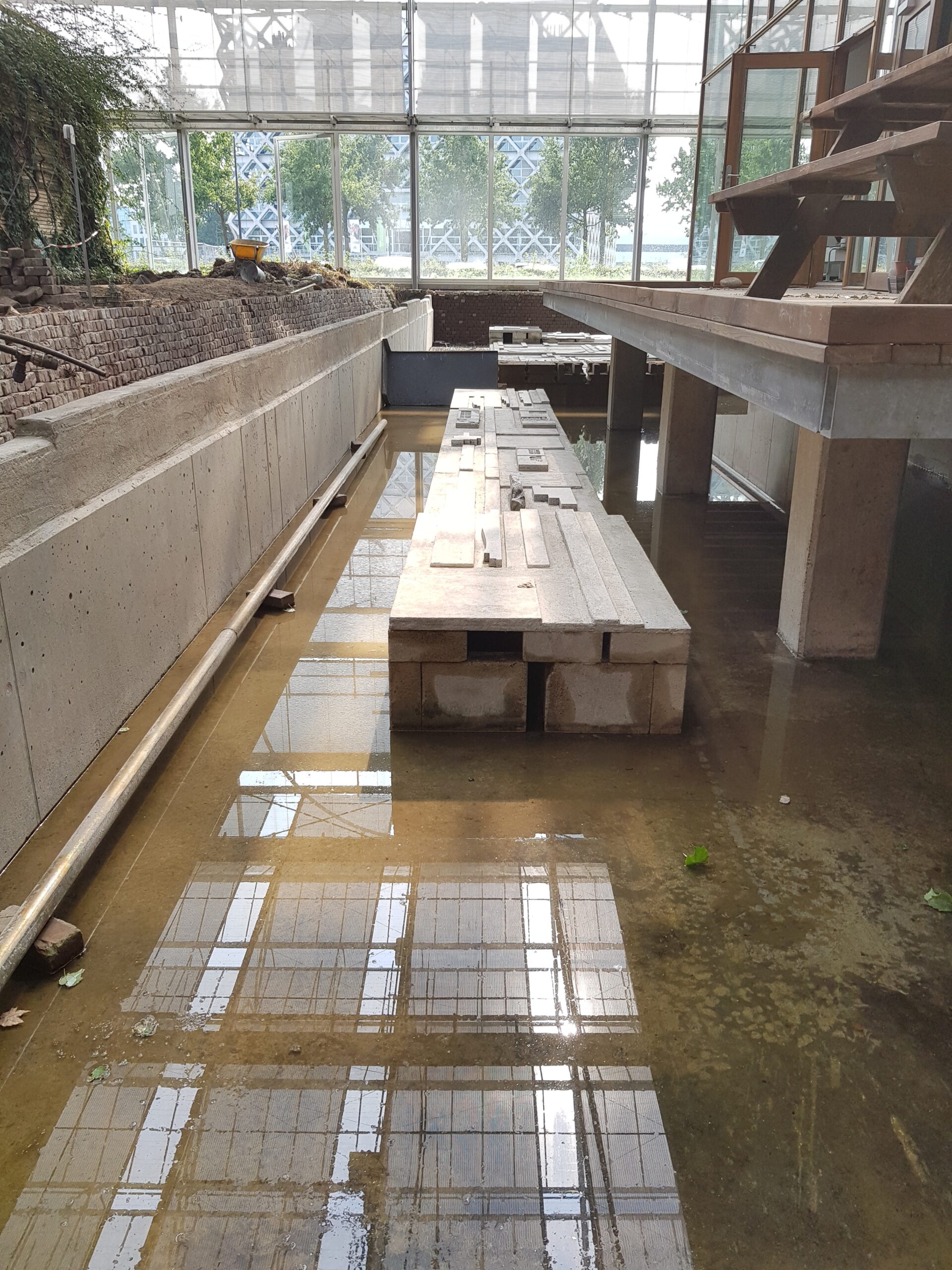As soon as the outdoor temperatures hit 25 degrees Celsius, the natural climate control system of Lumen is barely able to keep up and cool the building sufficiently. The A-wing, in particular, located on the southwest side of the building and thus the side which catches the most sun, becomes excessively hot. And the summer has only just begun.
The heat issues in Lumen are nothing new. Attempts to lower temperatures in the Environmental Sciences Group offices through the use of water cooling were made in 2016. Unsuccessfully, it soon transpired. One year later, temporary cooling units were placed to create a workable environment. And now, the temperature in some offices is over 30 degrees. What is going on?
Building’s lungs
Lumen is not equipped with a mechanical ventilation system. The building is cooled through airflow from the courtyard garden, while the pond behind and under Lumen contributes to a sustainable cooling strategy. This natural approach to climate control is in keeping with the building assignment presented to the architect in 1992. ‘The building must become exemplary for environmental and human-friendly construction […] and provide a sensory experience of the link between the indoor and outdoor environment.’
A book published in 2010 by the ESG Art Committee extensively describes how the interior climate is controlled and what part the indoor gardens play. ‘These gardens serve as a source of heat in the winter and a natural air conditioning in the summer. The glass-covered interior gardens serve as the building’s lungs in terms of the climate.’
‘The users are jointly responsible for the proper functioning of the climate system, for example by opening or closing the windows in their office at the correct time’, the book states.
Complaints
A lunch meeting last week showed that this is not exactly how it works in practice. Some thirty Lumen users gathered to exchange views on the heat and to contribute to solutions. They are all affected by the heat in their offices, where temperatures of over 30 degrees are no longer exceptions.
The audience agreed that they, as representatives of ESG, have a positive stance on the natural climate control system as designed by the architect. And that there may be some disadvantages in the middle of summer and the dead of winter is acceptable. But something must be done about the extremes. If not naturally, then mechanically.
The current natural climate control system may be in keeping with the themes on which ESG employees are working, but that does not mean that asking for air conditioning is hypocritical. They want a workable office environment, not AC shame.

 Courtyard garden Lumen. Photo Resource
Courtyard garden Lumen. Photo Resource 

